
The highest point in Nevada lies on the summit of Boundary Peak. Located in the Northern White Mountains, it forms a twin peak alongside Montgomery Peak in California. The sister mountain is 298 feet higher and the two are separated by an extremely stony ridge across a distance of about a mile.
Boundary Peak got its name from being close to the state line that divides the saddle among the two peaks. It was probably given by surveyors who carried out work in the West in the middle of the 19th century.
Getting to Boundary Peak
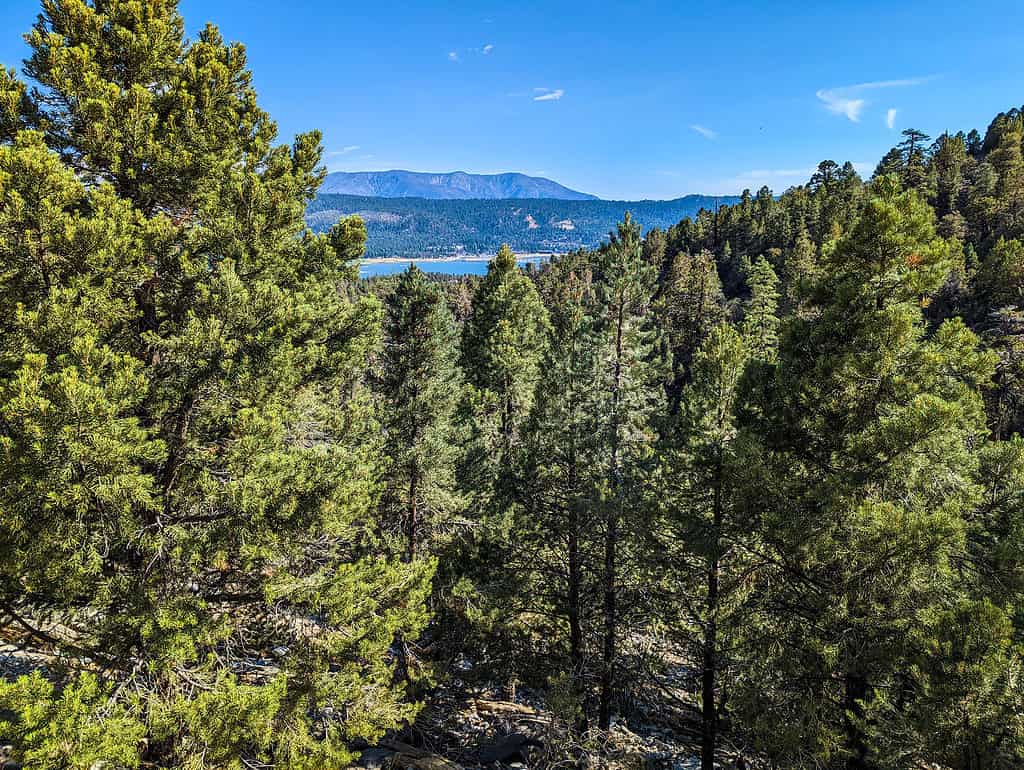
Boundary Peak is in Inyo National Forest.
©iStock.com/Noah Sauve
No matter which way one approaches it, one must reach Nevada Highway 264 in order to reach Boundary Peak. A rugged dirt road leading west is located about 200 yards south of the intersection of Nevada Highway 264 and Nevada Highway 773.
It is not necessary to have a 4-wheel drive car, but a high clearance truck is advised, particularly on the final mile or two. Additionally, a few small streams and washes must be crossed. The trailhead is located after roughly 14.7 miles of following this road.
Go forward at the crossroads at two miles and once more at 2.4 miles. When you reach the B & B Mine after traveling about 11 miles, turn right, then immediately left. Instead of turning right, continuing straight will bring you to a parking lot; turn right twice to reach the mine buildings.
Another road junction, but this one is clearly marked, can be found at mile 12.1. Continue up the canyon after making a right turn. The road is fairly bumpy and narrow in this area.
Highway six directly east of the California-Nevada line, is traveled by certain people. The Queen Mine at 9,200 feet is accessible despite the road’s extreme roughness.
Animals Near Boundary Peak
Although the landscape of Boundary Peak is another to take your breath away, it’s home to a plethora of animals as well. Let’s take a look at the creatures that call this towering mountain their home.
Blue Grouse
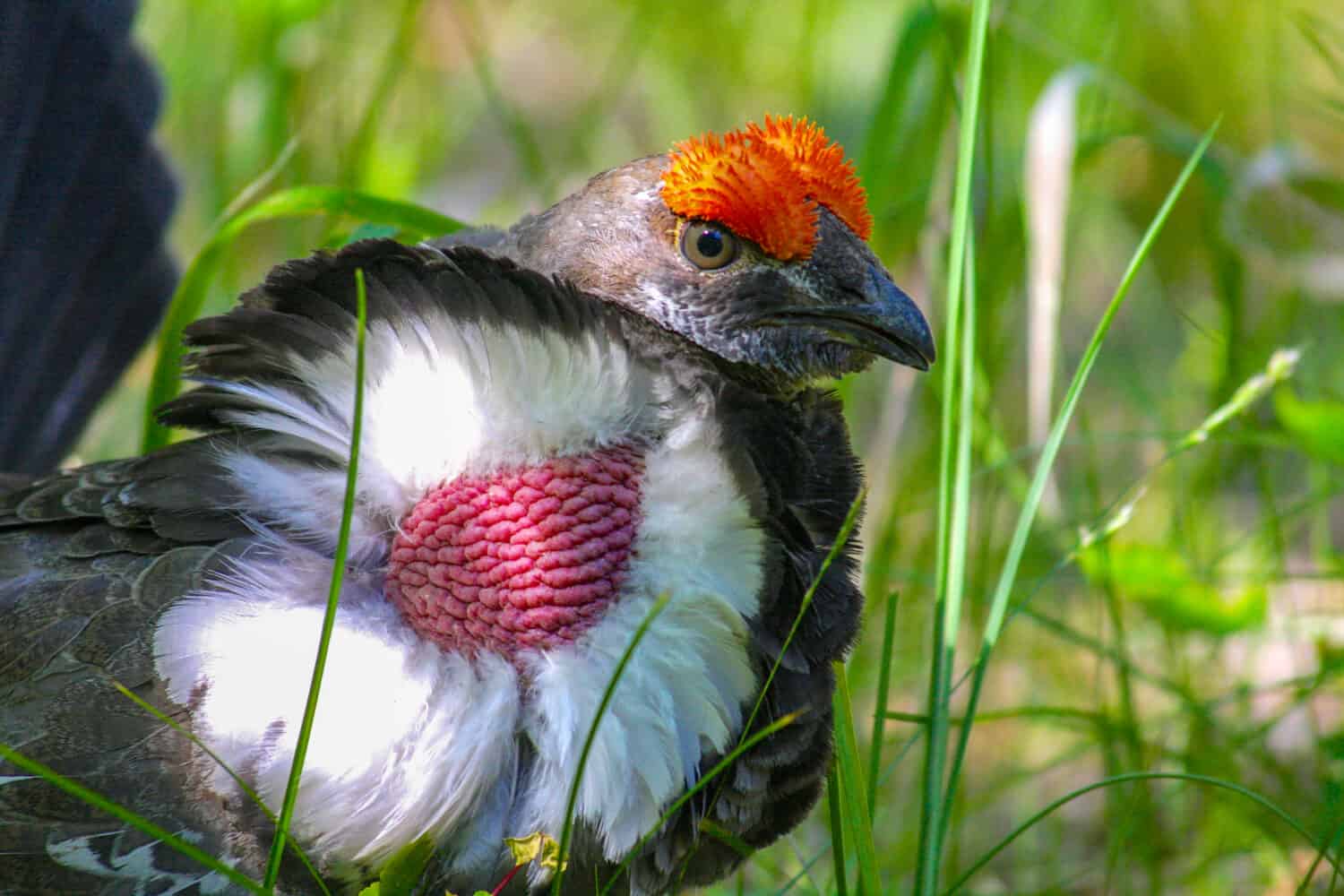
There are 10 species of grouse in the United States.
©CSNafzger/Shutterstock.com
This species, along with the related Sooty Grouse of the woodlands along the Pacific Coast, was referred to as the “Blue Grouse” for almost a century. This bird is currently referred to as a Dusky Grouse.
The Dusky Grouse is North America’s third-biggest grouse species. Most of the day is spent sleeping and eating by dusky grouse. They hunt for bugs and vegetation on the ground, in addition to foliage, needles, and flowers in trees, particularly in the winter.
Early in springtime, males make strutting demonstrations on the ground while executing brief flights from nests in trees or close to the ground.
Wolverine
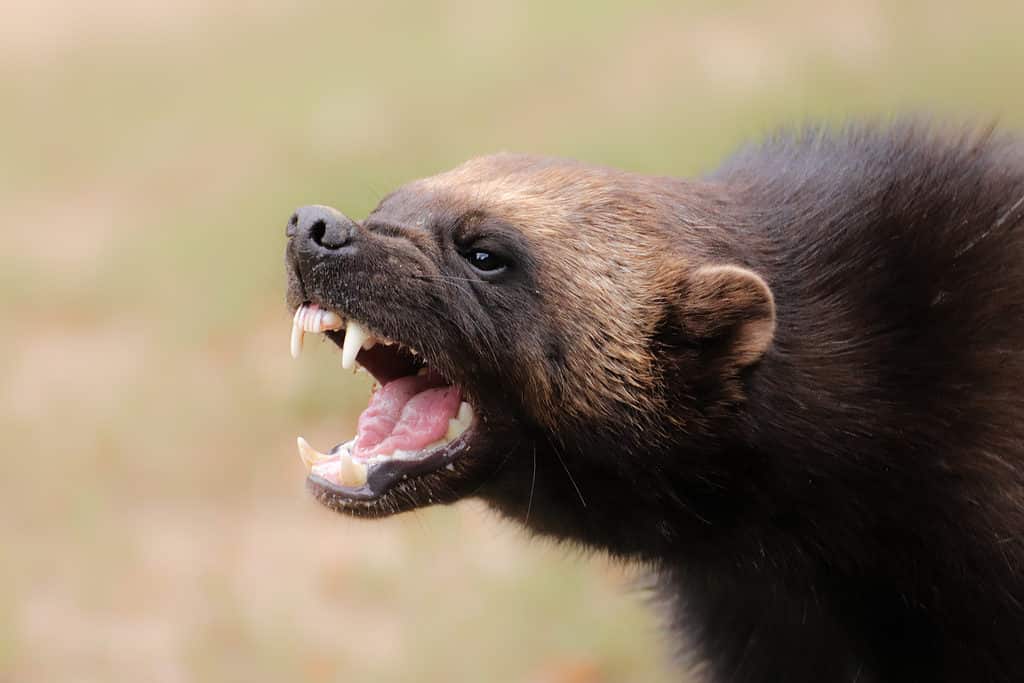
Wolverine show their teeth to scare off predators.
©DenisaPro/Shutterstock.com
The wolverine is typically about three to four feet long. This creature weighs approximately 17 to 40 pounds and is nearly two feet tall when standing on its hind legs. In the past, the wolverine lived in the southern Rocky highlands in Colorado, Wyoming, and New Mexico as well as the Sierra Nevada highlands of California.
Wolverines are vicious carnivores that mostly target animals like rodents and bunnies. Throughout the winter, when food becomes scarce, they also act as scavengers by consuming the decomposing remains of large animals including caribou, deer, and elk.
Western Pipistrelle
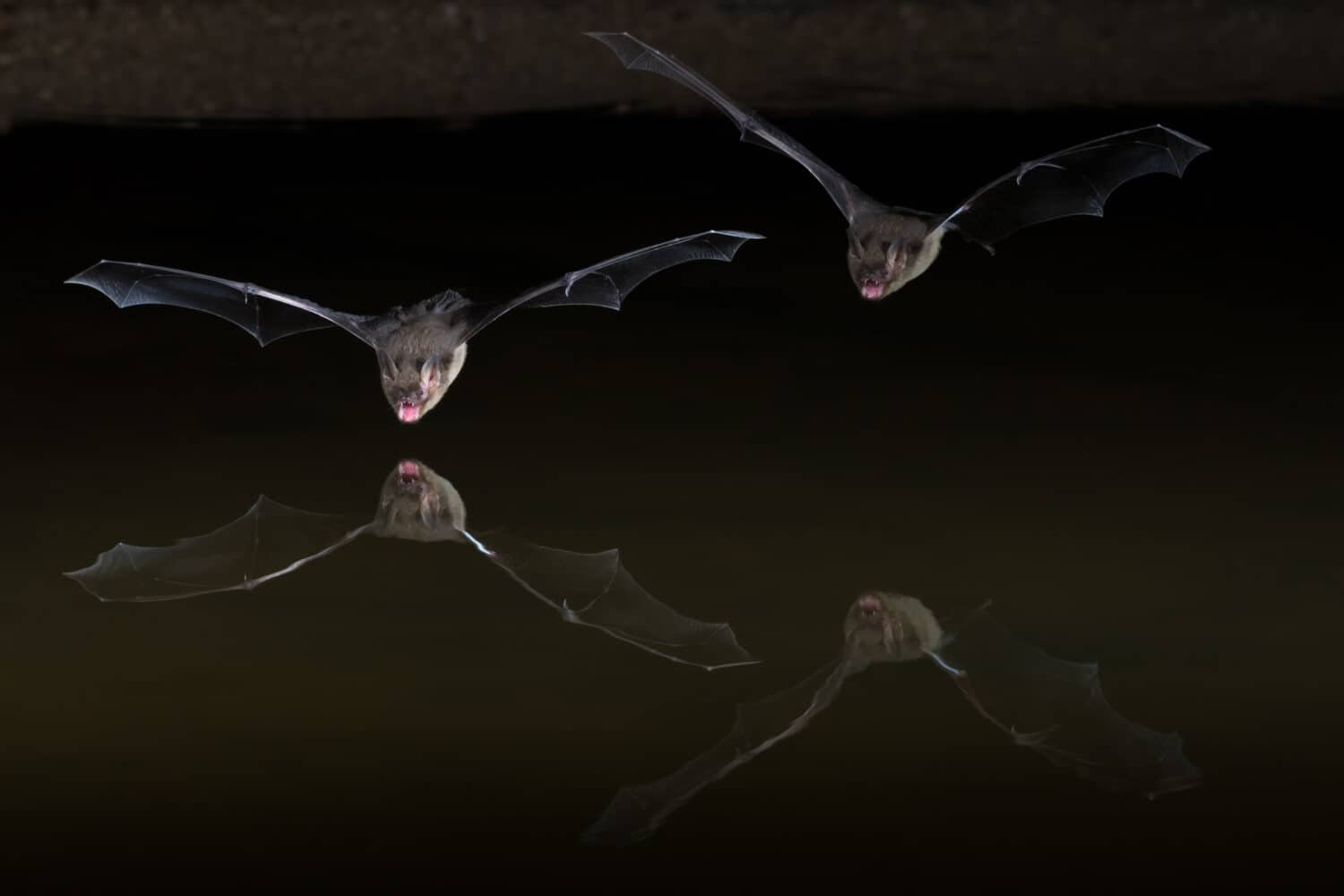
Some people call these creatures “Canyon Bats.”
©Dee Carpenter Originals/Shutterstock.com
The smallest bat in the country is the Western pipistrelle. They’re so small, these bats weigh less than a quarter of an ounce! The bottom layer is white, and its top coat ranges in color from brownish red to golden brown. It has a black face and ears.
This little creature might travel a short distance in search of an appropriate place for hibernation in colder regions. On Boundary Peak, you’ll find these bats in mines, caverns, and rock crevices where they’ll hibernate.
Owls and perhaps huge bat species are examples of predators to the Western pipistrelle. This species of bat loves to eat bugs, moths, flies, caterpillars, mosquitoes, and bees. They live for roughly 10 to 13 years.
Mountain Bluebird
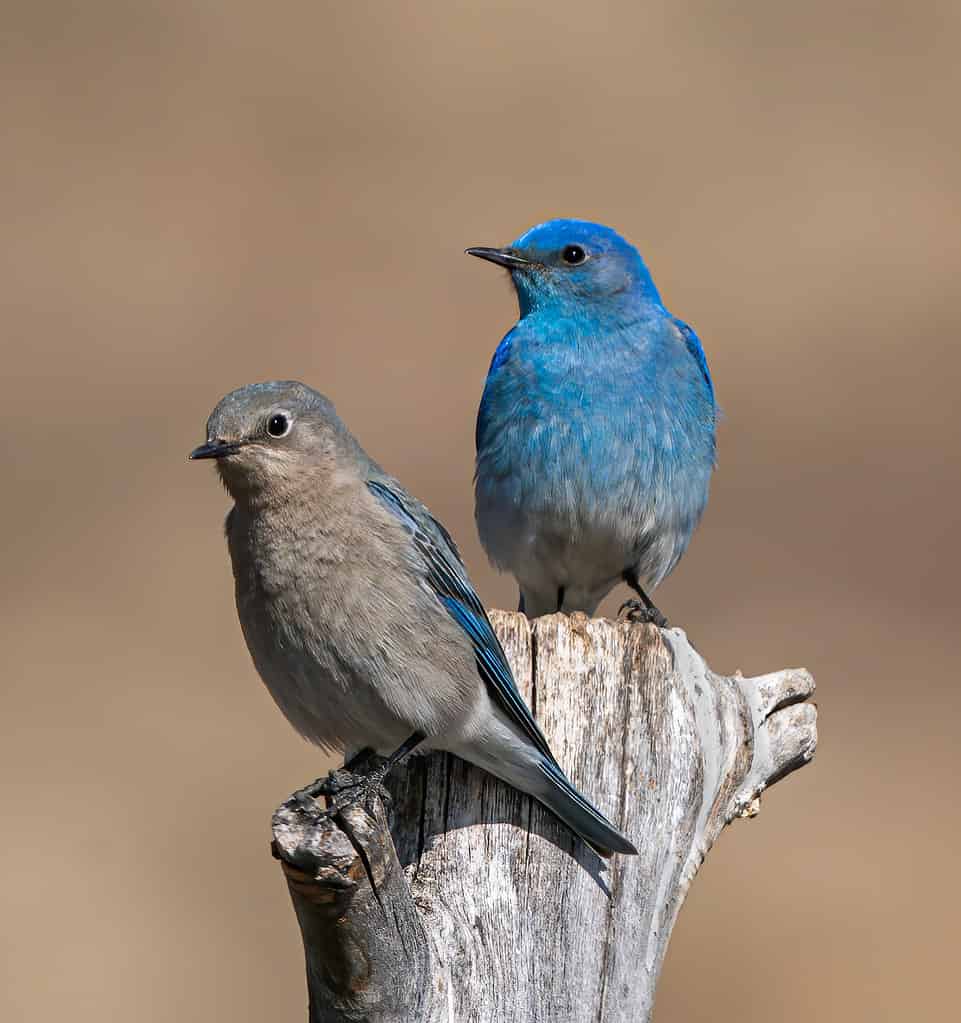
A pair of Mountain Bluebirds pause for a rest during their house hunting expedition.
©Richard Seeley/Shutterstock.com
The Mountain Bluebird is perhaps one of the most beautiful birds in Nevada. In a majority of western North America’s open environments, male Mountain Bluebirds add a touch of cerulean brilliance.
Particularly in regions where individuals have left nest boxes, you can observe these cavity-nesters darting among perches in alpine meadows, scorched or cut-over fields, or where grassland meets forestry.
In contrast to beautiful males, a female Mountain Bluebird is more interested in desirable nest grounds. She only considers the place and condition of the nesting hole he offers her when choosing a mate.
Western Spotted Skunk

You can easily spot these animals thanks to their distinct coat pattern.
©rawaccess/Shutterstock.com
The smallest of the four North American skunks is the western spotted skunk, a small to medium-sized member of the skunk family. It weighs no more than four pounds. Western spotted skunks are drawn to locations with thick undergrowth plants, cliffs, wooded buildings, and other species’ burrows.
Small animals and bugs make up the majority of the stinky critters’ diet, but it also consumes carcasses, fruit, birds, bird eggs, snakes, and frogs. Western spotted skunks can be found in Boundary Peak and much of western Washington, from the slopes of the Cascade Mountains to the coastline.
Coyote
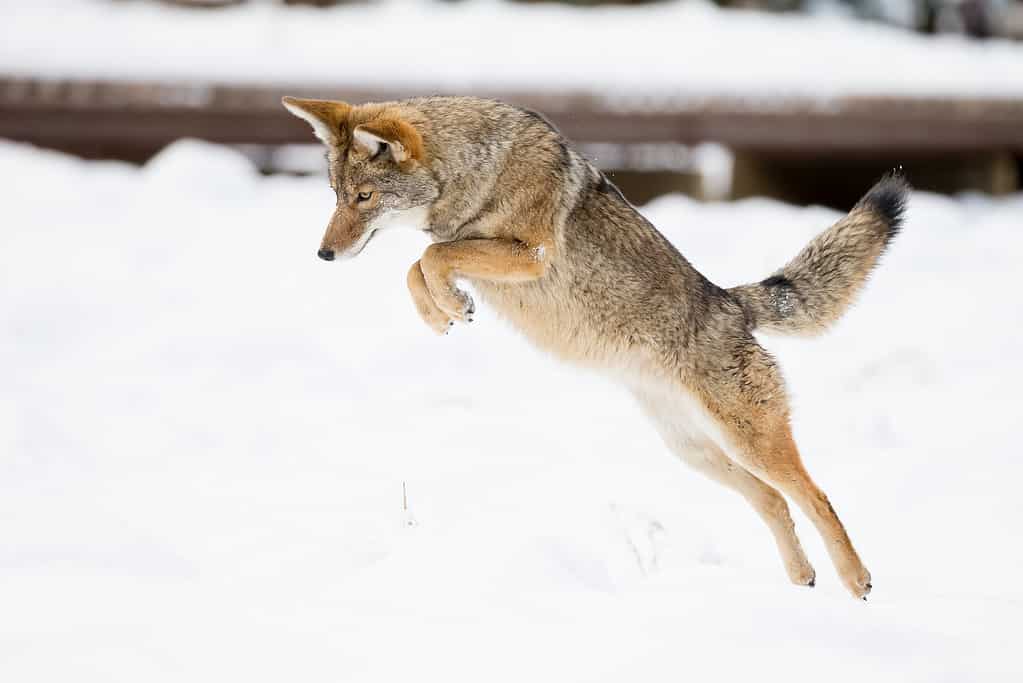
Coyotes will sometimes pounce on their prey.
©Keneva Photography/Shutterstock.com
The coyote is typically between 25 and 40 pounds and is about the size of a medium dog. It features huge, upright ears, a tail that is bushy with a black point, and long, slender legs. The coyote is a highly clever creature with acute vision, hearing, and smell senses.
It mainly operates at night and is quite opportunistic. Coyotes will consume nearly anything. It is challenging to pinpoint the coyote’s preferred environment because of its versatility and keen survival instinct, despite the fact that they are most frequently connected to wide grasslands in the West and brushy regions in the East.
Due to their adaptive character, they have numerous benefits for living in a setting that evolves quickly.
Desert Horned Lizard

You’ll know a desert
horned lizard
by its horns.
©Swaroop Pixs/Shutterstock.com
Alright, so you may not find a desert horned lizard at the summit of Boundary Peak, but they do live in the general area. The term “horny toads” is frequently used to describe these creatures, even though they are actually lizards.
They stand out for having a flat body with a single row of fringed scales running along the sides. On either side of the neck, they have a single row of somewhat larger scales. Southeastern Oregon, California, western Arizona, Utah, and Nevada are home to desert horned lizards.
They can be spotted outside of the US in Mexico, northeastern Baja California, and western Sonora. These lizards are primarily found in the desert, and they favor areas with an undergrowth of shrubs.
Vegetation Near Boundary Peak

Boundary Peak Wilderness is the area surrounding the highest point in Nevada.
©Kris Wiktor/Shutterstock.com
The 10,000-acre Boundary Peak Wilderness was established by the US Congress in 1989. This little wilderness area is home to a surprising variety of species, including alpine tundra throughout the slopes at higher elevations, subalpine and bristlecone pine forests close to tree lines, and sagebrush grasslands and pinyon/juniper woodlands at the lower elevations.
Final Thoughts
Although the hike is challenging, the 360-degree vistas of both California and Nevada from the summit are definitely worth it. The valley bottom and the top are separated by an astounding height difference of 10,000 feet, providing a panorama that is difficult to forget.
It is strongly advised that you invest a couple of days in the vicinity adapting if you are not accustomed to the local altitude. Along with beauty everywhere you look, this region of Nevada is home to a plethora of incredible animals and towering trees.
If you ever get a chance to visit, don’t hesitate to spend a day at Boundary Peak!
Summary of the Animals That Lurk Atop Nevada’s Tallest Mountain
| Rank | Animal |
|---|---|
| #1 | Blue Grouse |
| #2 | Wolverine |
| #3 | Western Pipistrelle |
| #4 | Mountain Bluebird |
| #5 | Western Spotted Skunk |
| #6 | Coyote |
| #7 | Desert Horned Lizard |
Thank you for reading! Have some feedback for us? Contact the AZ Animals editorial team.








